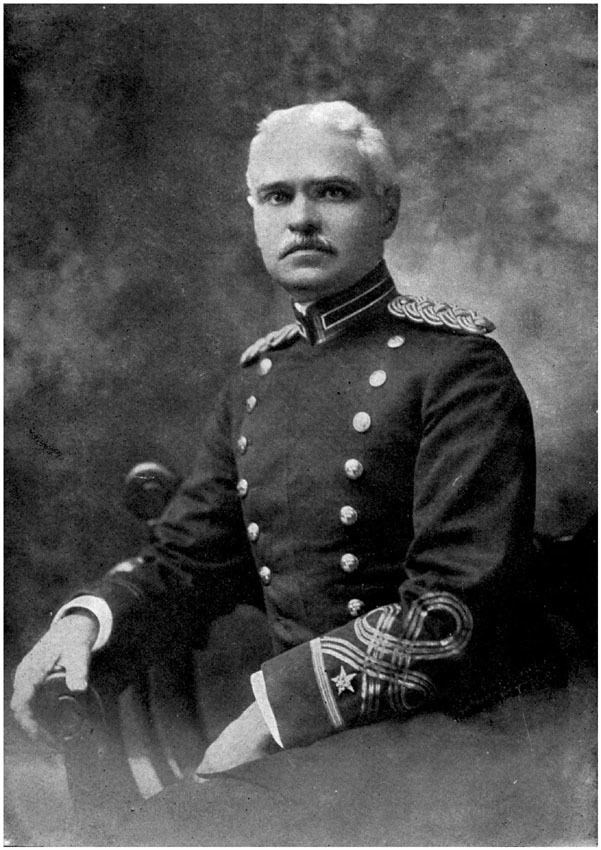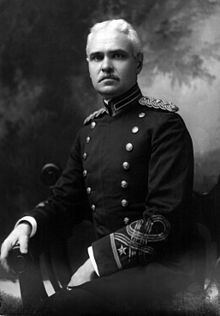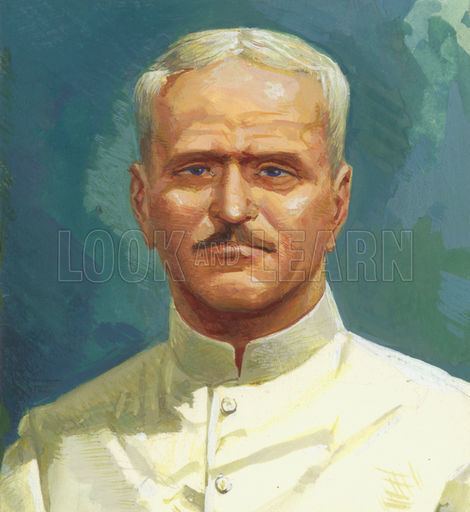Nationality American Name George Goethals | Role Civil engineer | |
 | ||
Born June 29, 1858 ( 1858-06-29 ) Brooklyn, New York, U.S. Died January 21, 1928, New York City, New York, United States Significant awards Cullum Geographical Medal, Public Welfare Medal, John Fritz Medal | ||
How George Washington Goethals Became Chief Engineer of the Panama Canal
George Washington Goethals ( ; June 29, 1858 – January 21, 1928) was a United States Army officer and civil engineer, best known for his administration and supervision of the construction and the opening of the Panama Canal.
Contents
- How George Washington Goethals Became Chief Engineer of the Panama Canal
- Early life and education
- Military career
- Personal life
- Death
- Legacy
- In popular culture
- References

Early life and education

Goethals was born in Brooklyn, New York to Flemish immigrants from Stekene, Belgium Johannes Baptista (John Louis) Goethals, a carpenter, and wife Marie Le Barron. Aged 14, he entered the College of the City of New York. In April 1876, after three years of college, he won an appointment to the United States Military Academy at West Point. He graduated second in his class in 1880, and was commissioned as second lieutenant in the Army Corps of Engineers
Military career

Goethals remained at the military academy during the summer and fall of 1880 as an assistant instructor in practical astronomy. In 1881, he attended the Engineer School of Application at Willets Point, New York. His first field assignment came in 1882 with his appointment as engineer officer of the Department of Columbia in Vancouver, Washington. His routine duties included reconnaissance, surveys, and astronomical work, while his most consequential project was the replacement of a 120-foot bridge across the Spokane River.

From 1885 to 1889, he taught civil and military engineering at West Point. He returned to the field in 1889 to assist Colonel John W. Barlow with navigational improvements on the Cumberland and Tennessee rivers.
While an instructor at West Point, Goethals agreed to tutor Charles Young, the third African-American graduate of West Point; Young had failed an engineering class but – after being tutored by Goethals – passed and graduated in 1889.
In 1891, Goethals was promoted to captain. He soon was placed in charge of the completion of the Muscle Shoals Canal along the Tennessee River near Florence, Alabama. This was his first independent command, and his responsibilities included the design and construction of the Riverton Lock at Colbert Shoals. His recommendation of a single lock with an unprecedented lift of twenty-six feet was initially opposed by his superiors in Washington, and he was forced to persuade the conservative army engineers of the merits of his design. The lock's successful construction set a world record for lock height. The success of the Riverton Lock inspired the eventual adoption of high-lift locks elsewhere, including those for the Panama Canal.
During the Spanish–American War, he was lieutenant colonel and chief of engineers of United States Volunteers. In 1903, Goethal became a member of the first Army General Staff in Washington, D.C. According to the book The Panama Canal: An Army's Enterprise, Goethals made such an impression on William Howard Taft, then Secretary of War, that Taft recommended him as an engineer for the Panama Canal. In 1907 US President Theodore Roosevelt appointed George Washington Goethals chief engineer of the Panama Canal. The building of the Canal was completed in 1914, two years ahead of the target date of June 10, 1916.
Colonel Goethals received unstinted praise from visiting engineers and from the technical press of the world. In 1913 the degree of LL.D. was conferred on him by the University of Pennsylvania, and in the spring of 1914 he was awarded medals by the National Geographic Society, the Civic Forum (New York), and the National Institute of Social Sciences. In 1914, Goethals and William Crawford Gorgas were awarded the inaugural Public Welfare Medal from the National Academy of Sciences. Also, Congress awarded Goethals their thanks and a promotion to Major General. President Wilson appointed him the first Civil Governor of the Panama Canal Zone.
General Goethals resigned from the post of Governor of the Canal Zone in 1916. Soon he was made chairman of the board of inquiry in regard to the Adamson eight-hour law. His positions thereafter were: State engineer of New Jersey in 1917, manager of the Emergency Fleet Corporation (briefly), acting quartermaster of the United States Army, and a member of the War Industries Board (1918). In 1919, he requested his release from his active service.
Later on, he headed an engineering and construction firm. He became the first consulting engineer of the Port of New York Authority (now the Port Authority of New York and New Jersey), and the Goethals Bridge, one of the authority's bridges between New York and New Jersey, was named for him.
Personal life
In 1884, he married Effie Rodman; they had two sons.
Death
He died at his apartment at 12 East 86th Street in Manhattan, New York City on January 21, 1928. He was buried at the cemetery of the United States Military Academy at West Point.
Legacy
He is the great-great-grandfather of actress Angela Goethals.
In World War II, the United States liberty ship, USNS George W. Goethals (T-AP-182), was named in his honor, as was the Goethals Medal, awarded by the Society of American Military Engineers for eminent contributions to engineering and related fields.
The Goethals Bridge between Staten Island, New York City and Elizabeth, New Jersey also bears his name. Streets are named for him in Richland, Washington, in Queens, New York City at St. John's University, and in Fort Leonard Wood.
In popular culture
In the play and film Arsenic and Old Lace, the character Teddy Brewster mistakes Dr. Einstein for Goethals, inviting him to inspect a new canal.
George Washington Goethals appears in Civilization 5 as a Great Engineer.
